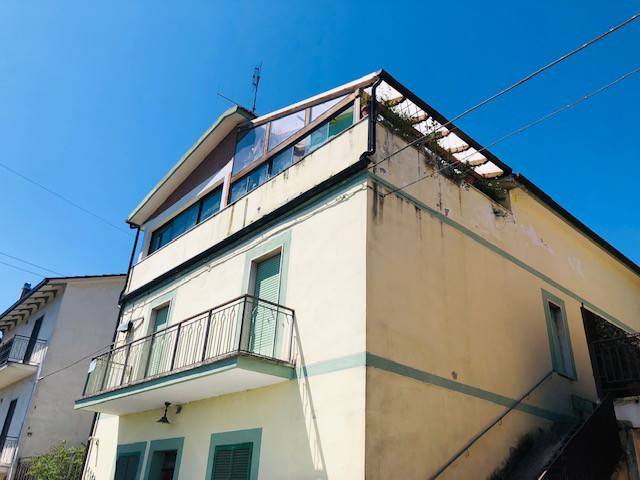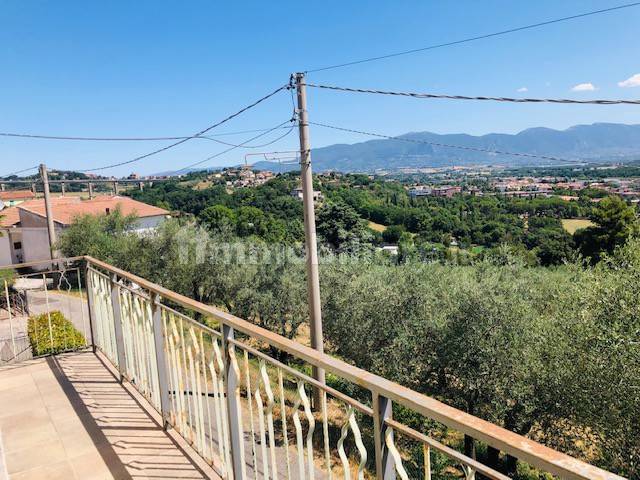
Apartment Strada del Poggiolo, Narni Scalo, Narni
NarniStrada del Poggiolo- € 60,000
- 5
- 162m²
- 1
- No
Description
This description has been translated automatically by Google Translate and may not be accurate
Near Narni Scalo, loc. Cigliano, consisting of two residential units, the first with living room, kitchen with dining room and fireplace, two bedrooms, bathroom and balcony; the second with kitchen with fireplace, bedroom and bathroom. The property includes a cellar, a garage and an outdoor area. Bright and panoramic. The area around Narni was already inhabited in the Paleolithic, as evidenced by the findings in some of the caves that make up the area. Around the beginning of the first millennium the Osco-Umbrians settled in the area calling Nequinum their settlement. its impervious position [5]. It took over a year to complete the feat, which took place in 299 BC thanks to the betrayal of two local people who allowed the Romans to enter the walls. It thus became a Roman colony and a strategic center along the Via Flaminia. To punish the support given to the Gauls, and considering Nequinum a bad omen (in Latin, nequeo means "I can't", and nequitia means "uselessness".), The Romans changed the name of the Latin city of Narnia [6] [7 ] [8], from the name of the nearby river Nar, the current Nera. of the first two Punic wars. Along the Nera river, near the hamlet of Stifone, where the port of the Roman city was once located, the archaeological site of what appears to be a Roman shipyard has recently been identified. [10]. The ancient navigability of the Nera river is also known about Strabo [11] and Tacitus [12]. The passage in which the consul Gneo Calpurnio Pisone, in 19, decided to embark in Narni with his wife Plancina in order to reach Rome without arousing suspicion is known. It became Municipium in 90 BC. In the year 30 AD Nerva was born here, the last Italic among the Roman emperors. The quotation of Narnia by Tertullian, in the Apologeticum, in a list of "false gods" drawn up in the first century, as the city was the ancient home of the god Visidianus (Narnensium Visidianus), dates back to the early Christian era. with certainty when the city of Narnia changed its name to Narni, but this probably happened gradually over time starting from the thirteenth century [no source] and then became effective after the French revolution [no source], although until the end of the nineteenth century century inscriptions with the ancient name of Narnia [no source] were still found in the tombstones and official writings. he has also dealt with the origins of the name "Narnia" several times in his books as noted for example on page 306 of his co-authored book with Roger Lancelyn Green: CS Lewis: A Biography, published in 2002. Below is an excerpt that report here anto said by Lewis to Hooper:
«When Walter Hooper asked CS Lewis where he had found the word Narnia, Lewis showed him his atlas Murray's Small Classical Atlas, ed. GB Grundy (1904), which he had bought when he was reading the classics with his tutor Kirkpatrick at Great Bookham [1914-1917]. On page 8 of this atlas there is a map of Italy with the inscriptions in Latin. Lewis had underlined the name of a small town called Narnia, simply because he loved the sound of that word. Narnia - or "Narni" in Italian - is located in Umbria, halfway between Rome and Assisi. »
Symbols
A Narnese legend has it that, in medieval times, in the territory between Narni and Perugia there was a Griffin, against the which the two cities, at war with each other, had coalesced. Once killed, Perugia kept the bones of the Griffin (white) and Narni the skin (red) as a trophy. For this reason, the Perugia griffin is white and the Narni griffin is red. language of the same. "
«When Walter Hooper asked CS Lewis where he had found the word Narnia, Lewis showed him his atlas Murray's Small Classical Atlas, ed. GB Grundy (1904), which he had bought when he was reading the classics with his tutor Kirkpatrick at Great Bookham [1914-1917]. On page 8 of this atlas there is a map of Italy with the inscriptions in Latin. Lewis had underlined the name of a small town called Narnia, simply because he loved the sound of that word. Narnia - or "Narni" in Italian - is located in Umbria, halfway between Rome and Assisi. »
Symbols
A Narnese legend has it that, in medieval times, in the territory between Narni and Perugia there was a Griffin, against the which the two cities, at war with each other, had coalesced. Once killed, Perugia kept the bones of the Griffin (white) and Narni the skin (red) as a trophy. For this reason, the Perugia griffin is white and the Narni griffin is red. language of the same. "
Features
- Reference and listing Date
- 74359 - 06/11/2022
- contract
- Sale
- type
- Apartment | Full ownership | Medium property class
- surface
- 162 m² - See detail
- rooms
- 5 (2 bedrooms, 3 others), 1 bathroom, kitchen diner
- floor
- 2 floors: Ground floor, 1°
- total building floors
- 1 floor
- Car parking
- 1 in garage/box
- availability
- Available
- other features
- FireplaceOptic fiberBalconyTerraceSingle tv systemCellarPrivate gardenWindow frames in glass / woodDouble exposure
Expenses
- price
- € 60,000
- condominium fees
- No condominium fees
Energy efficiency
- year of construction
- 1962
- condition
- Good condition / Liveable
- heating
- Independent, with radiators, powered by methane
- Energy Efficiency
- G≥ 175 kWh/m² year
Floorplan

Additional options
Livia Mearelli




















